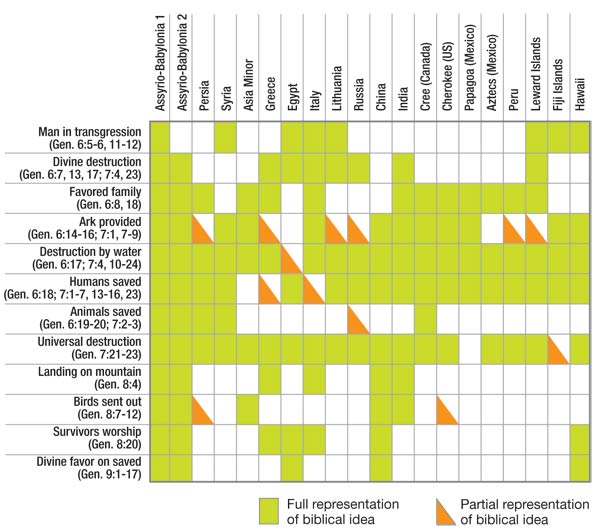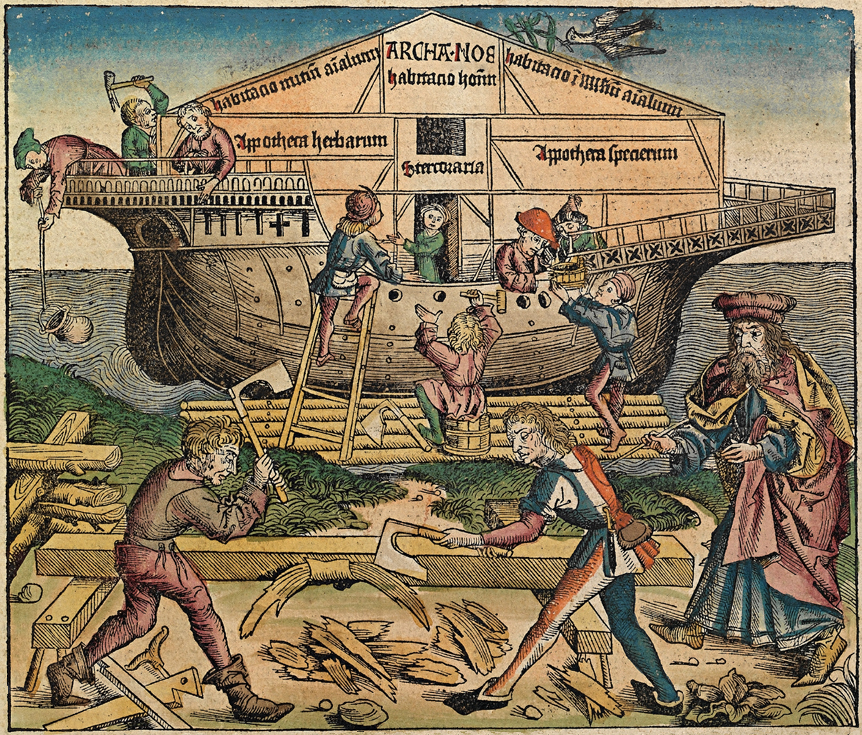Memories of a Global Flood
February 21, 2020
MOST people, even professed Christians, dismiss the idea that the story of Noah’s Ark is literally true. How do they explain then that the memory of a catastrophic flood exists in the collective traditions of reportedly hundreds of highly divergent cultural groups?
Quoting once again Hugh Owen:
Hundreds of people groups all over the world have preserved an historical memory of a global Flood. It is significant that the histories handed down by people groups who settled close to the location of the Tower of Babel, resemble most closely the true history related by Moses in the sacred history of Genesis.
This chart compares Flood accounts from all over the world and shows the remarkable similarities that exist among them. Not only do these accounts recall the Flood as a global event and a judgment upon mankind from which only one family and some animals were spared on an Ark; many of them include details contained in the Mosaic account of the Flood, such as the release of a bird to determine if the flood waters had receded at the end of the Flood.

Chart adapted from B.C. Nelson, The Deluge Story in Stone, Appendix 11, Flood Traditions, Figure 38, Augsburg, Minneapolis, 1931.
According to Dr. Monty White:
Hawaiians have a flood story that tells of a time when, long after the death of the first man, the world became a wicked, terrible place. Only one good man was left, and his name was Nu-u. He made a great canoe with a house on it and filled it with animals. In this story, the waters came up over all the earth and killed all the people; only Nu-u and his family were saved.
Another flood story is from China. It records that Fuhi, his wife, three sons, and three daughters escaped a great flood and were the only people alive on earth. After the great flood, they repopulated the world.
As the story of the Flood was verbally passed from one generation to the next, some aspects would have been lost or altered. And this is what has happened, as we can see from the chart. However, as seen in the given examples, each story shares remarkable similarities to the account of Noah in the Bible. This is true even in some of the details, such as the name Nu-u in the Hawaiian flood story. “Nu-u” is very similar to “Noah.”
Dr. Duane Gish, in his book Dinosaurs by Design, has accounted for 270 stories around the world that describe a devastating flood.
The Babylonian Epic of Gilgamesh, first translated in 1872, is a long poem that describes a coming flood. “A man is chosen to build a boat, animals are gathered, a single door opens into the boat, heavy rains fall, the man sends out a dove and a raven, the boat lands on a mountain, and the man offers sacrifices in thanksgiving,” says Troy Lacey and Lee Anderson.
The only myth that is strikingly similar to the Bible account came from the Babylonians. (The Babylonian tablet is dated from the eighteenth century BC, while Moses wrote Genesis in the fifteenth century BC.) The similarities make sense if both were written near the time of the actual Flood. Later myths, however, have little in common with the Bible. Indeed, the Chinese myth says the flood was caused by an argument between a crab and a bird!

